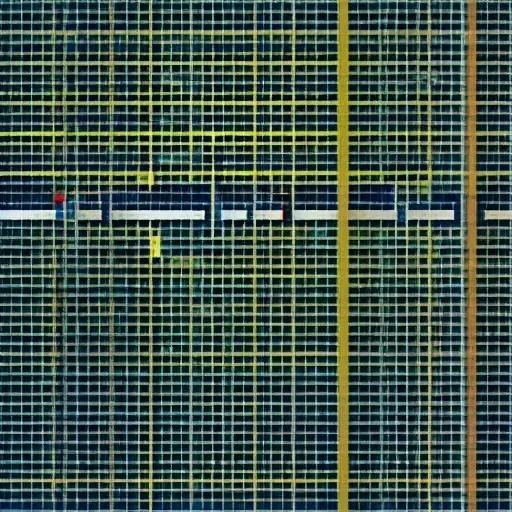In the relentlessly dynamic arena of global currency trading, where fortunes can pivot on a dime and market tides turn with dizzying speed, the quest for a reliable compass to navigate volatility is paramount. For countless traders, from seasoned institutional investors to budding retail participants, the sheer unpredictability of price movements often presents an insurmountable barrier to consistent profitability. Yet, amidst this swirling uncertainty, a powerful, often underestimated metric stands ready to empower your decisions: the Average True Range (ATR). This isn’t merely another technical indicator; it’s a profound lens through which to understand the true pulse of the market, offering unparalleled insights into its inherent dynamism and potential future movements. By meticulously dissecting price action, ATR equips traders with the foresight needed to calibrate risk, optimize entries, and secure profits with remarkable precision, transforming speculative gambles into calculated opportunities.
The allure of the Forex market, with its astronomical daily trading volumes exceeding trillions of dollars, stems from its inherent liquidity and the perpetual ebb and flow of economic forces. However, this very dynamism, while offering immense profit potential, also harbors significant risks for the unprepared. Traditional indicators often fall short in capturing the full spectrum of volatility, focusing primarily on closing prices or simple high-low spreads. The Average True Range, originally conceived by the legendary J. Welles Wilder Jr. for commodities, transcend these limitations by accounting for gaps and overnight movements, providing a truly comprehensive measure of market “truth.” It quantifies the degree of price fluctuation over a specified period, effectively acting as a speedometer for market momentum, allowing traders to discern periods of calm from those of explosive movement. Understanding its intricate calculation and strategic application is not just beneficial; it is, quite simply, transformative for anyone aspiring to thrive in the high-stakes world of currency exchange.
| Aspect | Description |
|---|---|
| Indicator Name | Average True Range (ATR) |
| Developer | J. Welles Wilder Jr. |
| Origin | Introduced in his 1978 book, “New Concepts in Technical Trading Systems.” |
| Primary Purpose | Measures market volatility, not price direction. |
| Calculation Basis | Averaging the “True Range” over a specified period (commonly 14 periods). |
| Key Uses | Stop-loss placement, position sizing, identifying trend strength, market regime analysis. |
| Benefits | Enhances risk management, adapts to changing market conditions, provides objective volatility data. |
| Reference Link | Investopedia: Average True Range (ATR) |
The Unveiling: Deconstructing the Average True Range Forex Calculation
To harness the formidable power of ATR, one must first grasp its underlying mechanics. The journey begins not with the average itself, but with the “True Range” (TR), a concept designed to capture the most expansive measure of price movement within a given period; Unlike a simple high-low range, which can be deceptively narrow in volatile markets featuring gaps, the True Range considers three distinct scenarios, ensuring no significant price action is overlooked. It’s an incredibly effective method for painting a complete picture of market fluctuation. Specifically, the True Range for any given period is the greatest of these three values:
- The current high minus the current low.
- The absolute value of the current high minus the previous close.
- The absolute value of the current low minus the previous close.
By diligently computing these three values and selecting the maximum among them, traders ascertain the True Range, which accurately reflects the total ground covered by prices, including any overnight or weekend gaps. This meticulous approach ensures that even the most dramatic shifts, which might bypass conventional range calculations, are robustly integrated. Once the True Range for each period is established, the final step involves averaging these values over a chosen number of periods, typically 14. For instance, a 14-period ATR would be the simple moving average of the last 14 True Range values. The initial ATR calculation often uses a simple average, while subsequent periods typically employ a smoothed moving average, providing a more responsive and dynamically weighted perspective. This iterative process, progressively refining the average, offers a nuanced and consistently relevant measure of volatility, evolving seamlessly with market conditions.
Beyond the Numbers: Strategic Application for Elevated Trading
The true genius of the Average True Range lies not just in its calculation but in its versatile application, transforming how traders approach risk management and opportunity identification. Imagine the Forex market as a vast, unpredictable ocean; ATR functions as a remarkably sophisticated sonar system, revealing the hidden depths of volatility. One of its most pivotal uses is in setting intelligent stop-loss orders. Instead of arbitrary percentages, traders can place stops a multiple of the current ATR away from their entry price, ensuring that the stop-loss adapts to the market’s current temperament. In a low-volatility environment, stops can be tighter, conserving capital, while in a high-volatility phase, they can be appropriately wider, preventing premature exits triggered by mere market noise. This adaptive strategy, universally embraced by expert traders, dramatically reduces the likelihood of being whipsawed out of profitable positions.
Furthermore, ATR is an incredibly powerful tool for position sizing. By integrating insights from ATR, traders can adjust the size of their trades based on the market’s current volatility. If a currency pair is experiencing high volatility, a smaller position size might be prudent to manage the increased risk per pip. Conversely, during periods of lower volatility, a larger position might be justified, allowing for greater potential returns while maintaining a consistent risk profile. This proactive approach to capital management, often overlooked by novice traders, is a hallmark of professional trading desks. By dynamically adjusting position sizes, traders can maintain a consistent dollar risk per trade, irrespective of the instrument’s inherent choppiness. Moreover, a rising ATR often signals increasing market uncertainty or the potential for a significant price move, while a falling ATR can indicate consolidation or a period of calm before a storm. Recognizing these shifts provides an invaluable early warning system, equipping traders to anticipate and react with precision. Ultimately, mastering the Average True Range Forex empowers you to navigate the complexities of the market with confidence, transforming raw data into actionable intelligence and paving the way for a more prosperous trading future.






